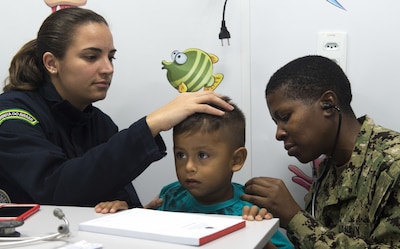By Air Force Staff Sgt. Timothy Moore Combined Joint Task
Force Horn of Africa
ARTA, Djibouti, Dec. 5, 2017 — U.S. service members assigned
to Combined Joint Task Force Horn of Africa geared up with their French
counterparts recently for the French Desert Commando Course at the Djibouti
Range Complex here.
The 12-day course began Nov. 26 and exposes service members
to the fundamentals of desert combat, survival and troop movements while also
bridging language and cultural barriers between the French and American troops.
“What we’re hoping to do is not just practice our tactics,
but also practice integrating with a foreign unit … and hopefully learn from
them,” said Army 1st Lt. Joshua York, a platoon leader with the Texas Army
National Guard’s 3rd Battalion, 144th Infantry Regiment, Task Force Bayonet.
Every service member who successfully completes the required
tasks will receive a desert commando badge at the end of the course.
Tough Standards
To select participants for the course, the battalion
conducted a two-day assessment that consisted of a 5-mile ruck march, a 5-mile
uniform run, pullups, rope and wall climbs and a swim test.
Out of the 60 service members who participated, the top 30
were sent on to a two-day assessment conducted by the French. It included an
8-kilometer (5-mile) run and another swim test through obstacles. Those that
successfully completed the French assessment were able to participate in the
desert commando course.
“It’s exciting because I get to work with other militaries,”
said Army Spc. Zachary Frazier, with the 3rd Battalion, 144th Infantry
Regiment, Task Force Bayonet. “I get to see other parts of Djibouti, and [I get
to] see what I’m made of here.”
In addition to testing their mettle and leaving with one of
the coveted French Desert Commando badges, many of the U.S. service members
hope to leave with more.
“I’ve been a [platoon leader] before, but that was a few
years ago and it was never with the French,” York said. “So, [I’m hoping to
learn] new tactics and have a good learning experience.”
Invaluable Experience
Because some of the troops never get to work outside of the
boundaries of Camp Lemonnier, York believes this training could be invaluable
to them, as they not only get to learn from people who work in the environment
more regularly, but also because they get to experience more of Djibouti.
“It’s a great opportunity to learn new tactics with our
fellow French servicemen and work interchangeably with them, and learn desert
survival,” Frazier said. “Things we probably wouldn’t get stateside.”
Though pushing themselves and becoming better is everyone’s
primary goal, York said he hopes they’ll also enjoy the experience.
“We are ready to have some fun and learn” he said. “They
have some exciting obstacle courses here -- some in the water, some on the side
of a mountain -- plus some fun-filled tactics. So right now, we’re highly
motivated.”









